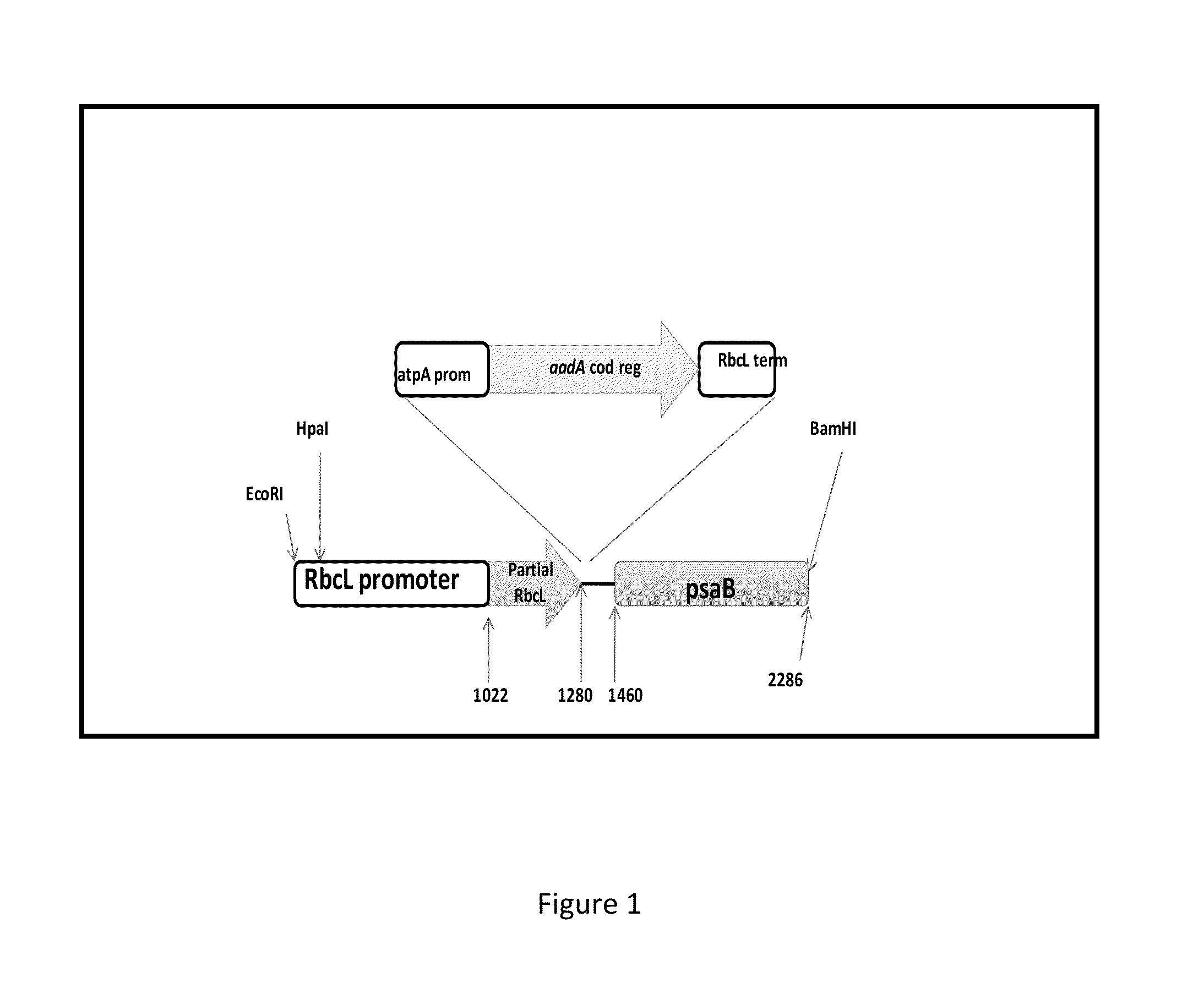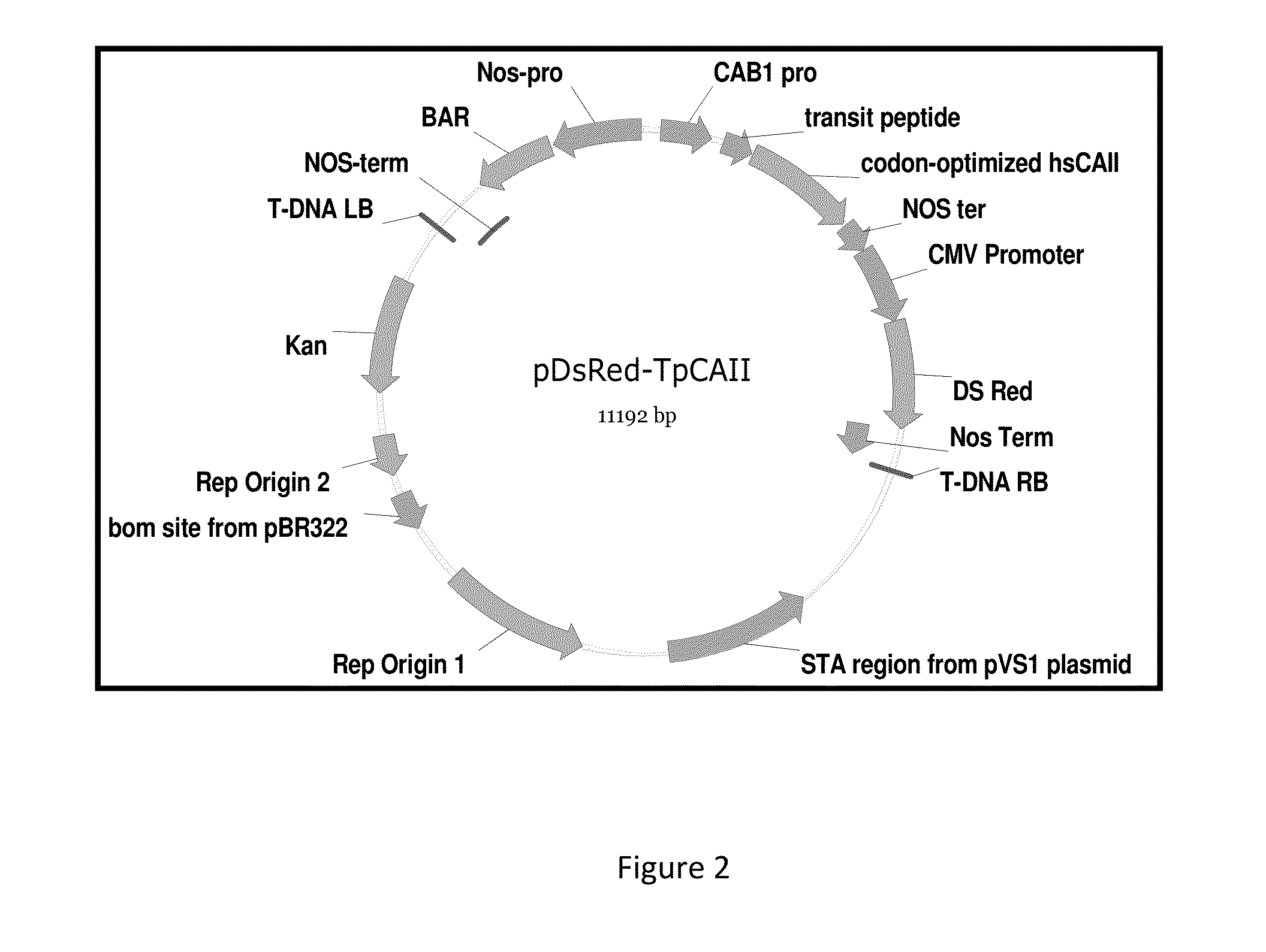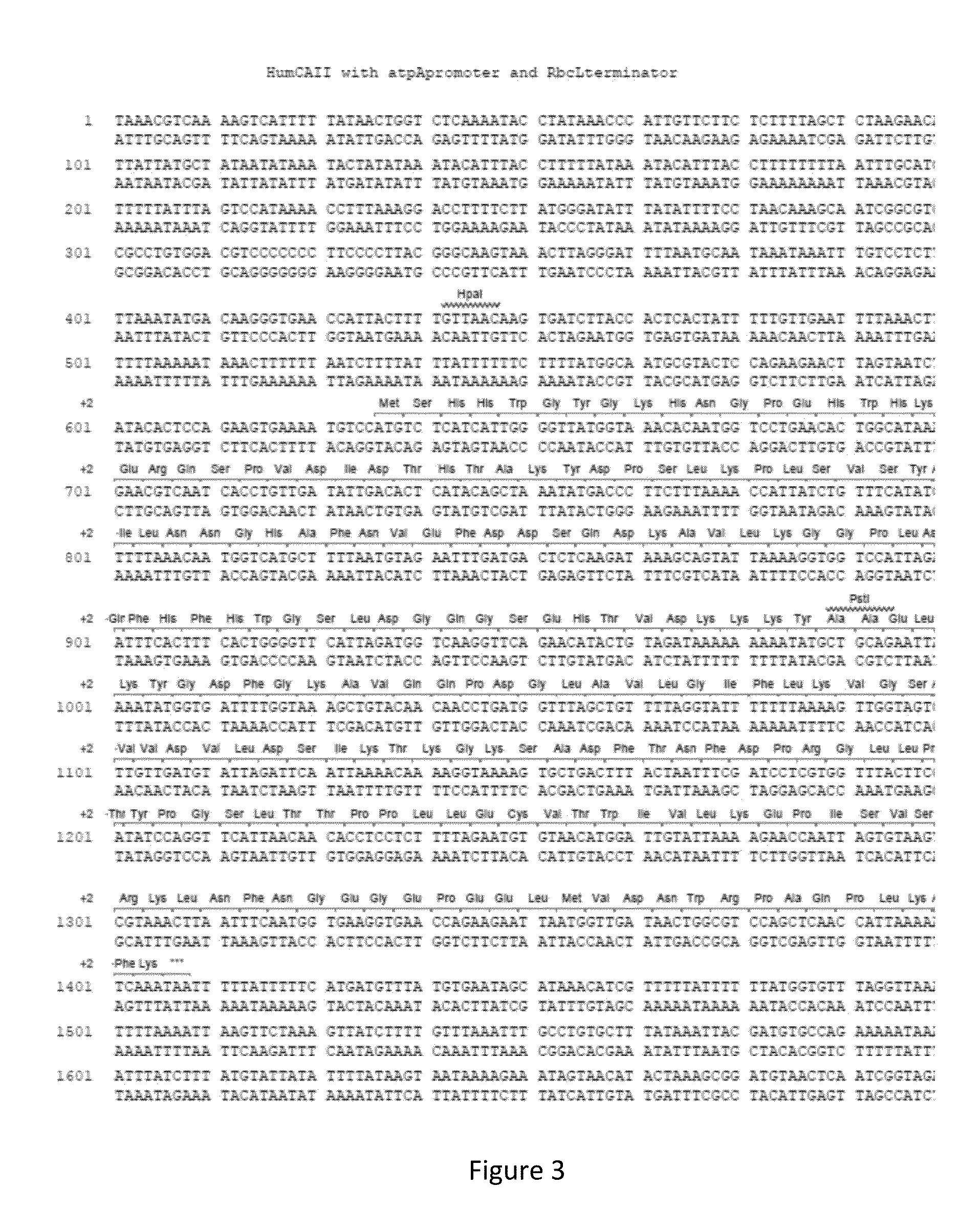Enhanced carbon fixation in photosynthetic hosts
a carbon fixation and host technology, applied in the field of enhanced carbon fixation in photosynthetic hosts, can solve the problems of limiting the photosynthetic efficiency of algae, reducing the regeneration of ribulose-1,5-bisphosphate (rubp), and reducing the carbon fixation efficiency by 30% or more in c3 plants, so as to increase the growth rate and/or biomass, and reduce the activity of oxygenas
- Summary
- Abstract
- Description
- Claims
- Application Information
AI Technical Summary
Benefits of technology
Problems solved by technology
Method used
Image
Examples
example 1
Expression of Carbonic Anhydrase (CA) in Algae Increases Biomass
[0280]To test the hypothesis that the rate of photosynthetic CO2 fixation could be increased in algae by expression of a catalytically more active CA in the chloroplast stroma we first constructed a transgenic Chlamydomonas strain in which the endogenous rbcL was partially deleted by transforming the cells with the construct shown in FIG. 1. The resulting strain (DEVL-18) requires transformation with a function rbcL gene for light-dependent growth.
[0281]To introduce the human CA-II gene into the chloroplast genome of this strain cells were transformed with an expression vector, in which a codon optimized CA-II gene was operably linked to a chloroplast promoter (atpA) (See FIGS. 2 and 3) to enable stromal expression within the chloroplast. The vector also contained a full length rbcL gene for selection of a transformed host.
[0282]As depicted in FIG. 4 and FIG. 5 the transgenic algae displayed increased growth rates and b...
example 2
RubisCO-Protein-Protein Interaction Fusion Protein
[0288]A transforming construct is provided which comprises either a RubisCO SS or LS subunit, for example, from Chlamydomonas reinhardttii or type I RubisCO (for example as disclosed in Tables D7 to D9) fused to a protein-protein interaction (for example, as disclosed in Tables D10 or Table D11. In one embodiment, a STAS domain is fused to the C-terminus of the RubisCO as disclosed in FIG. 3 (SEQ. ID. No. 82). In certain embodiments, the STAS domain is fused to the RubisCO with a linker (e.g. glycine linker), for example, as set forth in SEQ. ID. NO. 84, and FIG. 7). The RubisCO fusion is operably linked to, for example, either an LHCII promoter for nuclear expression or a RubisCO large subunit promoter for chloroplast expression.
example 3
Transformation of a Photosynthetic Host
The Construct Described in Example 1
[0289]is transformed into a host (e.g. DEVL-18 of Example 1) by particle bombardment. The photosynthetic host exhibits enhanced carbon fixation and / or oxygen-evolving activity and biomass yield, particularly at high pHs favoring bicarbonate accumulation in water.
PUM
| Property | Measurement | Unit |
|---|---|---|
| Fraction | aaaaa | aaaaa |
| Volume | aaaaa | aaaaa |
| Volume | aaaaa | aaaaa |
Abstract
Description
Claims
Application Information
 Login to View More
Login to View More - R&D
- Intellectual Property
- Life Sciences
- Materials
- Tech Scout
- Unparalleled Data Quality
- Higher Quality Content
- 60% Fewer Hallucinations
Browse by: Latest US Patents, China's latest patents, Technical Efficacy Thesaurus, Application Domain, Technology Topic, Popular Technical Reports.
© 2025 PatSnap. All rights reserved.Legal|Privacy policy|Modern Slavery Act Transparency Statement|Sitemap|About US| Contact US: help@patsnap.com



